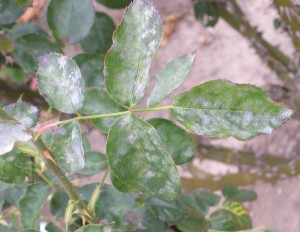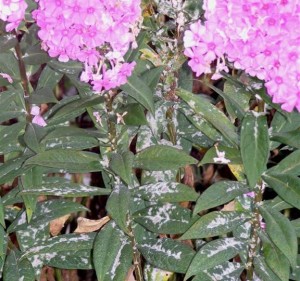Powdery Mildew
Powdery Mildew
Powdery Mildew is a common fungal disease that is most often seen afflicting roses, garden phlox, and bee balm, but is also frequently seen in lilacs, maples, honeysuckle, serviceberry, ornamental pear, crabapples, and many other plants. It gets its name from its appearance- a white dusting of what appears to be powder on the leaves and flower buds of the plant.
Powdery mildew is common in Idaho because it can thrive with little rainfall and in fairly low humidity. There are many species of fungi that cause powdery mildew. Most are specific to the type of plant. The powdery mildew on lilacs, for instance, is a different species from that on your maple. Powdery mildew prevents leaves from photosynthesizing to their fullest ability, resulting in stunted or twisted leaf growth, leaf chlorosis (yellowing) or necrosis (browning), and leaf drop. Some plants show very little effect to powdery mildew.
Treatment:
1. Avoid overhead irrigation, especially in the evening.
2. Improve air circulation between and within plants.
3. Rake fallen leave in the fall.
4. Fungicides include horticultural oil (0.5%), sulfur, and Fungonil (chlorothalonil). Fungicide is best applied as a preventive, to stop future infections.
So if you have roses, garden phlox or other plants that you have had problems with powdery mildew in the past, now is the time to spray to prevent infestations this year. It will require multiple applications. Be sure to follow label directions.
Sources: Personal experience and Weekly Orchard Pest Update, Utah State University Extension, May 2013




